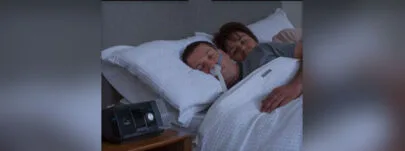
Lifespan of a CPAP Machine
Anyone with sleep apnea is likely already aware of the benefits provided by a continuous positive airway pressure (CPAP) machine.
These units are easy to work with, they function automatically and they will help to ensure a solid night of restorative sleep.
Still, we need to remember that this equipment is sensitive, and gets a fair amount of wear and tear. Let’s look at a typical CPAP lifespan to appreciate some of the signs that maintenance is required.
Whether you are considering an upgrade — or believe your machine is not functioning as it should — this article will provide some much-needed advice.
Why is it necessary to replace a CPAP?
One of the main factors that will impact a CPAP’s lifespan involves an accumulation of bacteria and other pathogens.
In fact, even the most rigorous of cleaning routines will not be able to completely eliminate such potential hazards. If these substances are allowed to remain, you face health risks including respiratory ailments and sinus infections.
Another motivating factor involves how quickly technology is advancing. New machines are always entering the marketplace and these cutting-edge models can offer unique features such as:
- Wireless connectivity
- Accessories that are extremely quiet
- Integrated and/or heated humidifiers
Also, even the most durable CPAP units will succumb to physical degradation. This can impede functionality and ultimately, cause the sleep apnea symptoms associated to return.
Signs that a CPAP Needs to be Replaced
First, analyze how your CPAP seems to be impacting your sleep. If you find that it is less effective than in the past, this could be a sign that your machine is no longer functioning as it should. Common examples include grogginess throughout the day, a sore throat or regularly waking up during the overnight hours.
The second area of concern involves the physical condition of the CPAP machine. Here are some sure-fire signs that it requires an upgrade or even an entire replacement:
- Internal mechanisms such as fans and motors are making strange noises.
- You are unable to obtain the amount of air pressure required to sleep without awakening.
How Often Should CPAP Components be Changed?
It’s not always necessary to invest in an entirely new machine. In fact, performance can be returned to nominal levels by changing specific parts.
While it is always wise to consult with the manufacturer for specific details, here are some general guidelines in terms of components and when they should be replaced:
- Replace filters twice a month.
- Connections and tubing may need to be upgraded every 90 days.
- Any headgear should normally be replaced twice each year.
Removing these components is generally a straightforward task and new alternatives can actually extend the lifespan of the CPAP machine itself. This brings us to the next point.
What is a Typical CPAP Lifespan?
From a very general perspective, most CPAP machines will need to be upgraded or replaced every three to five years. This depends on how well they have been maintained as well as what the manufacturer recommends.
Here are some of the most well-known models and their relevant life expectancies:
- The Philips Respironics DreamStation Auto: Five years
- The Z2 Auto Travel CPAP: Three to five years
- The ResMed AirMini: Three years
Will Insurers Cover a Replacement?
The answer to this question will partially depend upon your provider as well as the levels of coverage. However, most insurance companies will cover the costs of a new machine in accordance with the time frames mentioned above. When in doubt, make it a point to speak with a SleepQuest Customer Care Specialist.
SOURCES:



